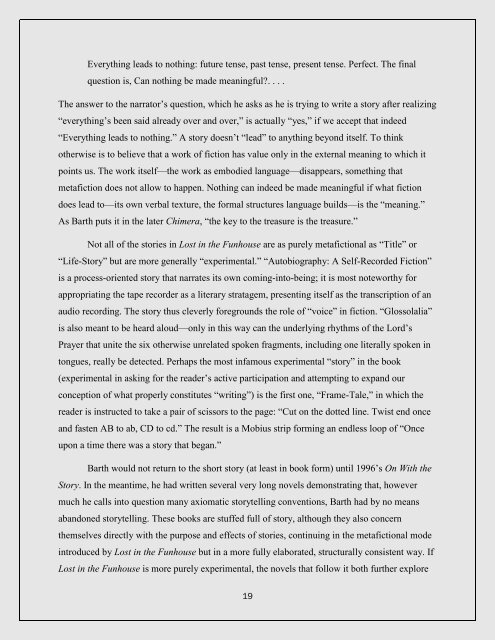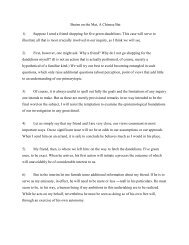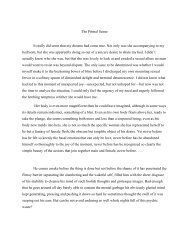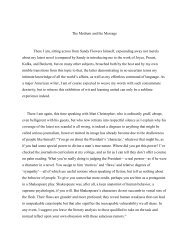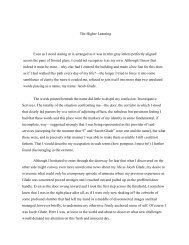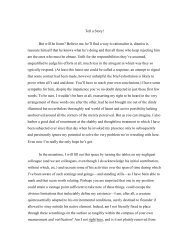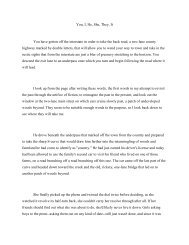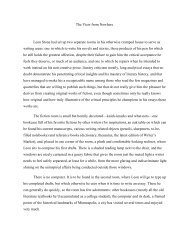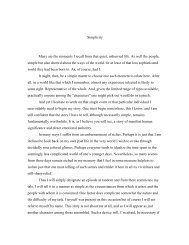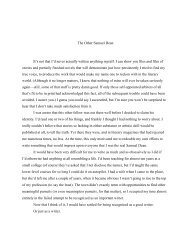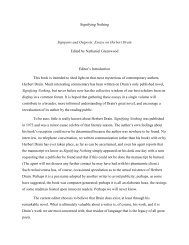APF
You also want an ePaper? Increase the reach of your titles
YUMPU automatically turns print PDFs into web optimized ePapers that Google loves.
Everything leads to nothing: future tense, past tense, present tense. Perfect. The final<br />
question is, Can nothing be made meaningful?. . . .<br />
The answer to the narrator’s question, which he asks as he is trying to write a story after realizing<br />
“everything’s been said already over and over,” is actually “yes,” if we accept that indeed<br />
“Everything leads to nothing.” A story doesn’t “lead” to anything beyond itself. To think<br />
otherwise is to believe that a work of fiction has value only in the external meaning to which it<br />
points us. The work itself—the work as embodied language—disappears, something that<br />
metafiction does not allow to happen. Nothing can indeed be made meaningful if what fiction<br />
does lead to—its own verbal texture, the formal structures language builds—is the “meaning.”<br />
As Barth puts it in the later Chimera, “the key to the treasure is the treasure.”<br />
Not all of the stories in Lost in the Funhouse are as purely metafictional as “Title” or<br />
“Life-Story” but are more generally “experimental.” “Autobiography: A Self-Recorded Fiction”<br />
is a process-oriented story that narrates its own coming-into-being; it is most noteworthy for<br />
appropriating the tape recorder as a literary stratagem, presenting itself as the transcription of an<br />
audio recording. The story thus cleverly foregrounds the role of “voice” in fiction. “Glossolalia”<br />
is also meant to be heard aloud—only in this way can the underlying rhythms of the Lord’s<br />
Prayer that unite the six otherwise unrelated spoken fragments, including one literally spoken in<br />
tongues, really be detected. Perhaps the most infamous experimental “story” in the book<br />
(experimental in asking for the reader’s active participation and attempting to expand our<br />
conception of what properly constitutes “writing”) is the first one, “Frame-Tale,” in which the<br />
reader is instructed to take a pair of scissors to the page: “Cut on the dotted line. Twist end once<br />
and fasten AB to ab, CD to cd.” The result is a Mobius strip forming an endless loop of “Once<br />
upon a time there was a story that began.”<br />
Barth would not return to the short story (at least in book form) until 1996’s On With the<br />
Story. In the meantime, he had written several very long novels demonstrating that, however<br />
much he calls into question many axiomatic storytelling conventions, Barth had by no means<br />
abandoned storytelling. These books are stuffed full of story, although they also concern<br />
themselves directly with the purpose and effects of stories, continuing in the metafictional mode<br />
introduced by Lost in the Funhouse but in a more fully elaborated, structurally consistent way. If<br />
Lost in the Funhouse is more purely experimental, the novels that follow it both further explore<br />
19


